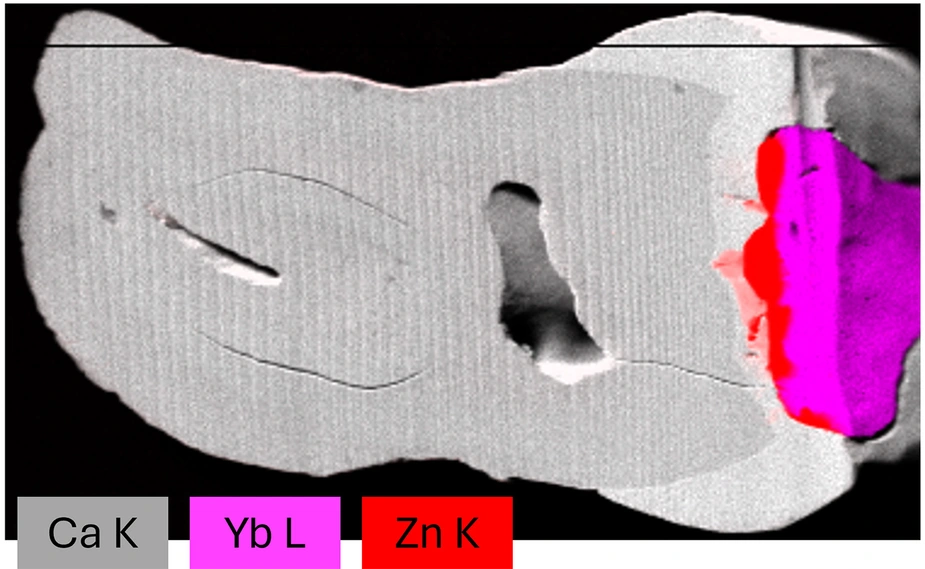New Method for Absorption Correction to Improve Dental Fillings
By combining the laboratory infrastructures at BAM and HZB, more accurate measurements can be conducted

A research team led by Dr. Ioanna Mantouvalou has developed a method to more accurately depict the elemental distributions in dental materials than previously possible. The used confocal micro-X-ray fluorescence (micro-XRF) analysis provides three-dimensional elemental images that contain distortions. These distortions occur when X-rays pass through materials of different densities and compositions. By utilizing micro-CT data, which provides detailed 3D images of the material structure, and chemical information from X-ray absorption spectroscopy (XAS) experiments conducted in the laboratory (BLiX, TU Berlin) and at the synchrotron light source BESSY II, the researchers have improved the method.
“We can now conduct more accurate measurements,” says Ioanna Mantouvalou. “The absorption correction with micro-CT and XAS takes into account how strongly different materials absorb X-rays.” This has been made possible through a combination of laboratory infrastructures at BAM (Federal Institute for Materials Research and Testing) and the HZB SyncLab laboratory in combination with the BESSY II synchrotron light source. BESSY II provided tunable X-rays over a wide energy range (200 eV to 32 keV) necessary for detailed compositional analysis. The micro-CT and confocal micro-XRF investigations were then facilitated using laboratory setups that utilize X-ray tubes as sources.
One of the materials investigated by Mantouvalou's team is dentin—a mineralized tissue that makes up most of the tooth, lies beneath the enamel, and plays a crucial role in transmitting sensations such as cold and heat. Its analysis is important for dentistry because, with dental fillings, elements often diffuse from the filling material into the dentin. “Our results enable detailed studies of such diffusion processes,” says Leona Bauer, a doctoral student at HZB and TU Berlin and the study's first author. They are important for improving the durability and biocompatibility of dental fillings and reducing the risk of secondary caries and other dental problems.
In addition to investigating materials for dentistry, the method offers applications in other areas where precise 3D elemental distributions are required. These include the analysis of biological tissues, the investigation of catalyst materials, and the study of materials in environmental science. The versatility of the measurement method could thus have a positive impact on various research fields.
Publication:
Absorption Correction for 3D Elemental Distributions of Dental Composite Materials Using Laboratory Confocal Micro-X-ray Fluorescence Spectroscopy
Leona J. Bauer, Frank Wieder, Vinh Truong, Frank Förste, Yannick Wagener, Adrian Jonas, Sebastian Praetz, Christopher Schlesiger, Andreas Kupsch, Bernd R. Müller, Birgit Kanngießer, Paul Zaslansky, and Ioanna Mantouvalou.
Analytical Chemistry (2024). DOI: 10.1021/acs.analchem.4c00116
Contact:
Helmholtz-Zentrum Berlin für Materialien und Energie
Dr. Ioanna Mantouvalou
Research Group SyncLab - Combined X-Ray Methods at BLiX and BESSY II
ioanna.mantouvalou(at)helmholtz-berlin.de
Press release HZB, 24 June 2024